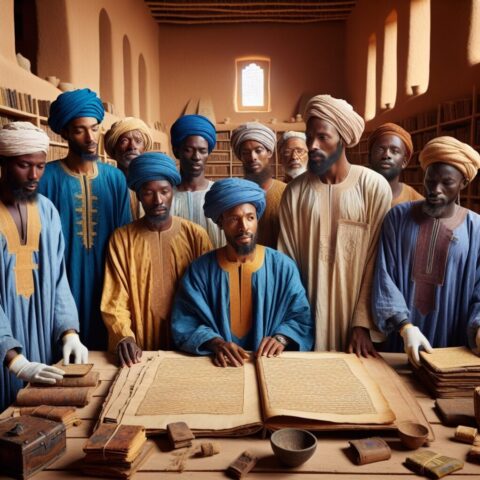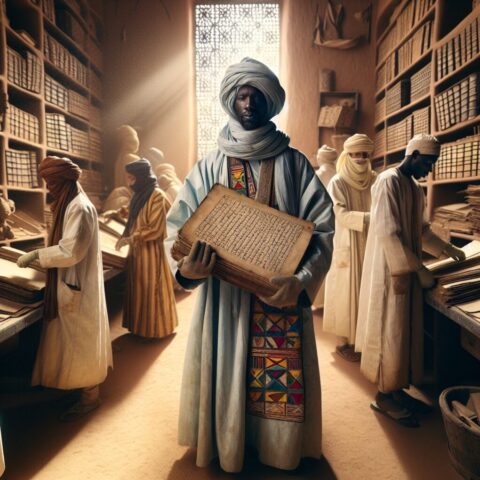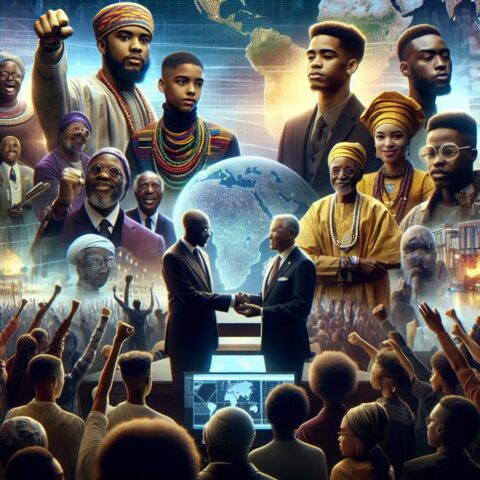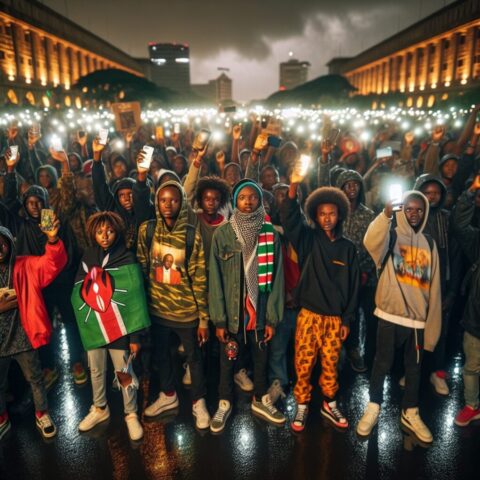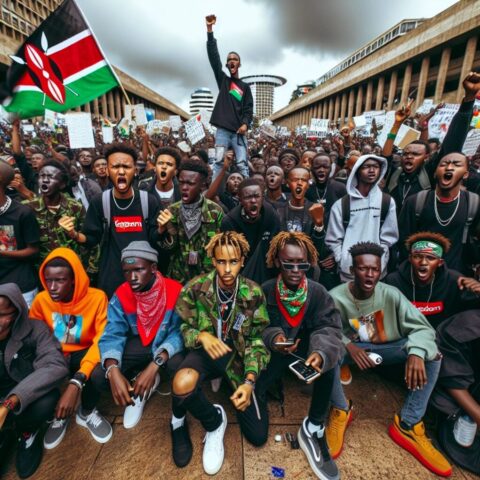GHANAIAN DESIGNERS MELD AFRICAN AND COSMOPOLITAN LOOKS TO CREATE NEW STYLES
By Erica Fisher
Thursday, November 26, 2009.
ACCRA, Ghana—Just off congested Oxford Street, where traders sell kaba and slit, a traditional wraparound skirt and matching tailored blouse, Jil Boutique features high-end labels from France and Italy. And in the back, proprietor Anne-Marie Adoley Addo sells her own designs—vibrant cocktail dresses adorned with traditional beads, and trench coats in African fabrics.
She sews local fabrics into Western-style garments, selling them for the locally-formidable prices of $200 to $250 each.
“The world is becoming so small, you get people from abroad coming in here, you should be happy that somebody can walk in here and identify with your country,” said Addo, 38, who designs under the label Jil Basia (basia means woman in Afante, a local African dialect).
Today Ghanaian fashion designers, both young and established, are fusing traditional African materials with Western contemporary styles, into a new trend dubbed “Afropolitan”—a melding of African and cosmopolitan. With an international customer in mind, they are blurring the boundaries between Africa and the West, proving that ancient Ghanaian fashions can survive.
In Accra, the capital, where professional people tend to wear conservative Western dress – ties, suits and blouses — to work, traditional clothing is mainly worn on important occasions, such as births, marriages and funerals.
In 2004, the Ministry of Trade had the brainstorm of creating “National Friday Wear,” a day dedicated to wearing African fabrics and prints. The idea was to both celebrate African traditions and boost the struggling national textile industry.
“It is a way of really boosting the fashion industry,” said Zita Okaikoi, Ghana’s Minister of Information. “Every part of the economy that brings income or job opportunities is very important, and we recognize that.”
Ghana had 14 textile and garment factories in 1975; by 2009 the number had dwindled to five. “National Friday Wear” has created a niche for some top Ghanaian designers, such as Bee Arthur, Ben Nonterah, and Kwesi Nti, who sell to the small upper middle class, mainly domestically.
“Now, because of traditional Friday, I get a lot of top executives who want to come and wear a shirt on Fridays,” said Arthur, 39, who runs B’Exotiq. “It was a good idea, a really, really good idea.”
Arthur says her clothes have “slight ethnic accents.” She blends modern and synthetic materials with traditional woven cloth, using the African prints as inserts or facings.
A Russian Ghanaian, Arthur also incorporates Asian and Russian symbols.
“The whole purpose is to make something that appeals to everybody—something that foreigners can wear outside of here and not feel awkward wearing back at home,” said Arthur, who speaks fluent Spanish, French, Russian and English.
Kofi Ansah, Ghana’s leading fashion designer, said designing successfully with African prints turns on how attractively those designs are featured. Ansah, who trained at the Chelsea School of Art in London, caught Europe’s attention when he used African fabrics for European styles.
“Have you seen an uncut diamond? It’s a rock, but if you cut it and get enough surface that when it turns it captures the light and it glitters, it becomes valuable,” he said. “We need to show the world the usage of our prints,” in order to be profitable internationally.
Ben Nonterah, 38, who specializes in urban African clothing, uses African prints in western styles. A knee-length skirt in an old African print adorned with red ribbons and sequins is displayed in his shop window. “That’s my style,” he said. “I want to be identified with Africa. Yet, even though I am identified with Africa, it can be worn anywhere in the world—Asia, Africa, America.”
While Ghana’s fashion industry is gaining international recognition, it imports far more clothing than it exports. Ansah estimated that 60 percent of Ghanaians wear second-hand clothes imported from Europe and the United States. The Ministry of Information said the government is working to increase taxes on imported clothing.
“When they come in, they will not be able to compete with the locally manufactured ones,” Minister Okaiko said.
Now designers are starting to target Accra’s young urbanites, who are carving our space in their closets next to their Levis and Pumas.
Designer Viviene Dzifa Adugu, 38, of Accra, tries for locally affordable clothes: $10 high-waisted shorts, $70 backless dresses that lace up the rear.
“It’s chic, its funky, it’s everything,” she said. “You can wear it to the club, birthday parties, dinner, wherever you want to take it.”
Manise, her store, is only two years old, but Adugu says she sells between 40 and 100 items per week, to both Ghanaians and foreigners.
Titi Ademola, 31, of Kiki Clothing, says that the fashion industry in Ghana has grown remarkably in the last seven years; the country now has its own Fashion Week.
“President Obama coming to Ghana for 24 hours has put Ghana on the map,” she said, referring to the U.S. president’s brief visit in July 2009. “The FIFA World Cup in 2010 will be staged in South Africa, and I feel anyone in the creative field based in Ghana and Africa as a whole should take advantage. Africa is in now.”
Adugu agreed.
“It’s a heritage thing,” she said. “Africa has been in the backstage for a long time, so it’s time for us to be forward.”
The next step for many designers is to secure export markets.
“My goal for the future is to see my dress hanging in New York, Paris, London — and Italy, of course,” said Addo. “That is my dream.”
All photos by Erica Fisher.
Erica Fisher is a journalism student at New York University and can be reached at livewire@journalism.nyu.edu
Send to a friend |
View/Hide Comments (0) |

